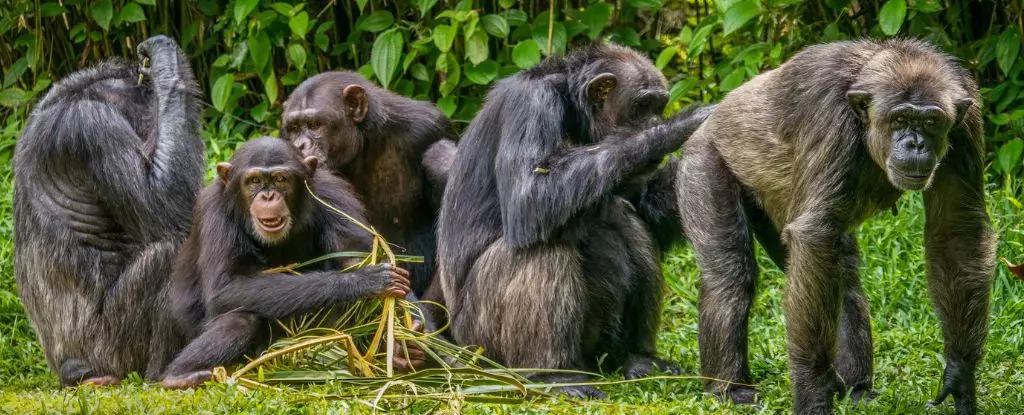The world of primate behavior is rich with complexities that hint at evolutionary adaptations and social intricacies. Recent research has unveiled an unexpected facet of primate conduct—urination. Though typically overlooked, this fundamental biological function appears to carry social implications that are as infectious as a shared smile. By examining the urination habits of chimpanzees, scientists are peeling back another layer of the intricate behaviors that underlie community dynamics among these complex creatures.
A study conducted at the Kumamoto Sanctuary in Japan meticulously observed 20 captive chimpanzees over an extensive period of 604 hours. Led by Ena Onishi and her team from Kyoto University, the research aimed to quantify the phenomenon of synchronized urination among chimps, with a particular focus on the impact of social hierarchy. The team recorded instances of chimps urinating within a 60-second interval of each other, revealing a remarkable tendency for individuals to follow the lead of their dominant counterparts. The results challenge preconceived notions about animal behavior, suggesting that even in a behavior as rudimentary as urination, social structures play a crucial role.
One of the most compelling outcomes of this research is the discovery that social rank significantly influences this behavior. Contrary to initial expectations that proximity or grooming behavior would determine the likelihood of synchronized urination, the results pointed to a different dynamic. When a dominant chimp urinated, those of lower status were more inclined to join in. This phenomenon positions urination as not merely an individual act of relief but as a social event governed by hierarchy and power dynamics. The implications of these findings extend beyond curious observations; they suggest that even primal behaviors can serve to reinforce community structure and cohesion.
Drawing parallels between urination and other social behaviors, such as contagious yawning, the researchers argue that social influences during such natural acts reveal deeper evolutionary roots. Just as yawning seems to have a connection to social bonding in humans and other animals, urination may also serve a similar function. The fact that chimpanzees urinate more frequently in response to nearby actions raises pertinent questions about communication and social signals within primate communities. How might this behavior enhance group cohesion or regulate social interaction?
The findings of this study have broad implications for our understanding of animal behavior and social interactions. They suggest that behaviors traditionally viewed as instinctive or reflexive might be more nuanced, governed by a complex interplay of social factors. As observed in human societies, the tendency to engage in activities alongside others—whether bath time or social interactions—may stem from long-standing evolutionary pressures favoring group living. This research opens avenues for exploring how social environments shape not just the actions of individuals but the behaviors of entire groups.
In discussing the social context of urination, it’s essential to acknowledge the cultural dimensions that shape the behavior even in humans. Expressions of collective bathroom breaks or societal proverbs embody the communal aspect of this basic need. The Japanese concept of “Tsureshon,” which denotes socializing during urination, similarly highlights the interconnectedness of biological needs and social behaviors. As research like Onishi’s unfolds, it beckons further exploration into how social structures and cultural contexts affect such basic behaviors across species.
This intriguing study on primate urination underscores the multifaceted nature of behavior that transcends mere biological necessity. As chimpanzees exhibit synchronized urination influenced by their social hierarchy, it challenges our understanding of animal behavior, illuminating the intricate ties between social dynamics and physiological actions. The exploration of such seemingly mundane activities ultimately sheds light on the deeper, evolutionary underpinnings that govern social organizations, both human and animal. As we continue to question and investigate these connections, the world of primate behavior promises to enrich our understanding of community, interaction, and the innate social bonds that tie us all together.


Leave a Reply